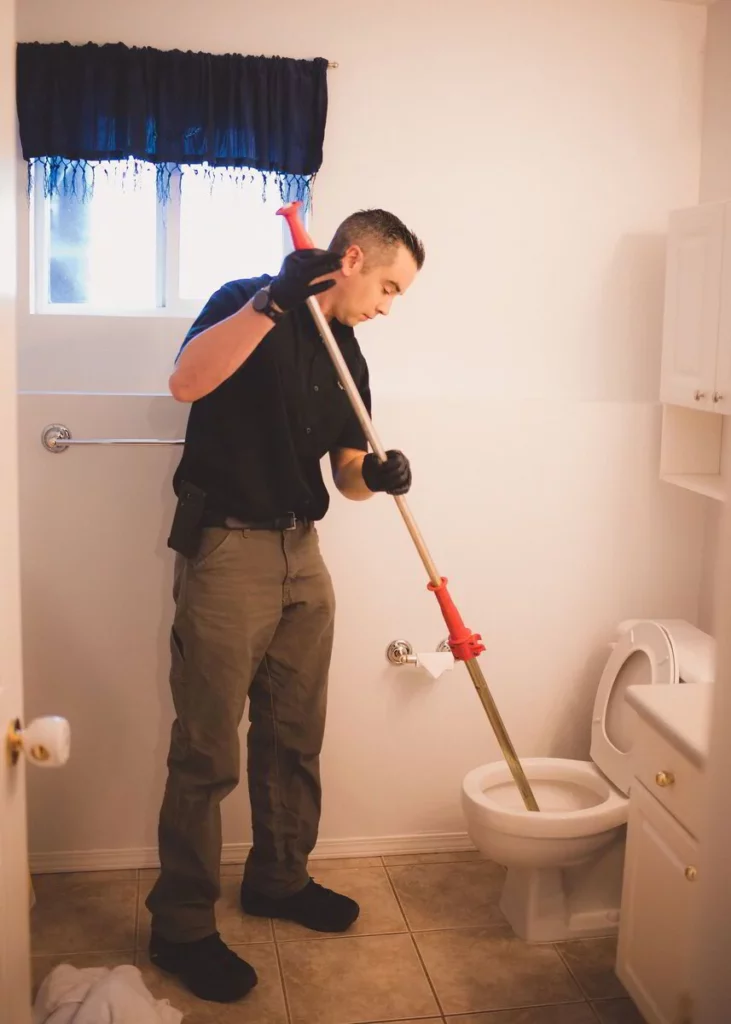Table of Contents
A clogged toilet is more than just a minor inconvenience; it’s a common household dilemma that can lead to stress and frustration. These blockages disrupt our daily routines, whether caused by an accidental flush of non-flushable items or a simple build-up. This post offers easy, DIY remedies using everyday items, empowering you to tackle this pesky problem confidently and easily, all from the comfort of your home.
Understanding the Clogged Toilet Problem
Understanding clogged toilets is crucial for effectively preventing and resolving these common household dilemmas. Toilet clogs typically occur when excessive waste, non-flushable items, or too much toilet paper accumulates in the pipes, preventing proper flow. This knowledge helps in choosing the right tools and methods for unclogging and maintaining a clog-free toilet through mindful flushing habits.
Preventive Measures
To prevent toilet clogs, it’s important to adhere to the following practices:
- Mindful Flushing: Limit toilet use to human waste and toilet paper only. Avoid flushing wipes, sanitary products, paper towels, and other non-flushable items that can cause blockages.
- Regular Maintenance: Once a week, pour hot water down the toilet to help dissolve any minor build-ups that might be forming in the pipes.
- Natural Cleaning Solutions: Monthly, use a combination of baking soda and vinegar as a safe, natural cleaning solution to maintain clear pipes and prevent chemical buildup from harsh cleaners.
- Avoid Chemicals: Steer clear of caustic chemical cleaners, which can damage your plumbing over time.
These simple yet effective measures can keep your toilet running smoothly and reduce the likelihood of clogs.
🛑 Warning: Preventing Toilet Overflow
Before tackling a toilet clog, preventing possible overflow is crucial, which can lead to more significant issues. Here’s what you should and shouldn’t do:
- Do Not: Continuously use the toilet flush in hopes the clog will clear itself. This often leads to overflowing, compounding the problem.
- Do: If you notice the rising water level, immediately stop flushing. Lift the tank lid and manually stop the flow using the float mechanism. If the water rises, shut off the water supply at the valve behind the toilet on the lower part of the wall. This prevents further water from entering the toilet and gives you control.

Method 1: Plunger Technique
To effectively use a toilet plunger to unclog a toilet, follow these steps:
- Choose the Right Plunger: Ensure you have a toilet plunger, specifically a flange plunger designed for toilets with an extended rubber flap to fit better into the toilet drain.
- Create a Seal: Position the toilet plunger in the toilet bowl, ensuring the flange is inside the drain. The plunger should be submerged in water to create a seal.
- Use Proper Technique: Push down gently at first to remove air, then use vigorous and steady up-and-down motions to create pressure without breaking the seal.
- Repeat as Needed: Continue plunging with forceful thrusts until the water drains.
- Test and Flush: Once the water drains, flush the toilet to remove the clog completely.
Tips:
- Add water to the bowl if necessary to cover the plunger.
- For different toilet designs, ensure the plunger completely covers the hole and maintains a good seal during use.
- Plunging can be more effective after letting hot water sit in the bowl to soften the clog.
Method 2: Enhanced Hot Water and Soap with Baking Soda and Vinegar
To unclog a toilet using hot water with added effectiveness from baking soda and vinegar, follow these adjusted steps:
- Select the Ingredients: Combine the grease-cutting properties of dish soap with the chemical reaction of baking soda and vinegar. This enhances the breakdown of organic matter.
- Prepare the Water: Heat water to just below boiling—hot enough to facilitate the reaction but not so hot as to damage the porcelain.
- Application: First, pour one cup of baking soda and two cups of vinegar into the toilet bowl. After the fizzing subsides, slowly add a generous squirt of dish soap and the hot water to mix without causing overflow.
- Let It Sit: If possible, let the concoction sit overnight, as the prolonged interaction helps dissolve the clog more effectively.
- Flush: Flush the toilet the next morning to see if the clog is cleared. The combined effects of soap, baking soda, and vinegar should have loosened or dissolved the obstruction.
Safety Tips:
- Temperature Caution: Ensure the water is hot but not boiling to avoid damaging the toilet’s porcelain.
- Chemical Reaction Caution: When adding baking soda and vinegar, be prepared for a fizzy reaction. Ensure this doesn’t cause the mixture to overflow the bowl.
- Overnight Consideration: Letting the mixture sit overnight is safe, but ensure no one uses the toilet during this time to avoid flushing prematurely.
Method 3: Alternative Tools
To unclog a toilet without a plunger, explore these alternative tools and methods:
- Toilet Brush: Use the brush as you would a plunger. Firmly push down and pull up to create suction. It’s less effective than a plunger but can work for smaller clogs near the surface.
- Wire Hanger: Straighten a wire coat hanger and round off the end by bending it into a loop and covering it with duct tape. This prevents scratching and allows you to reach and break apart deeper clogs without damaging the porcelain.
- Homemade Drain Snake: Fashion a drain snake from a thick wire or plastic zip tie. This can effectively penetrate and break down obstructions deep within the pipe.
- Toilet Auger: For severely clogged toilets, a toilet auger, also known as a plumber’s snake, can manually break apart the clog and push it through the drain, emphasizing its effectiveness in unclogging toilets.
✅ Pros: These tools are typically readily available at home, saving you the time and hassle of a store trip.
✖️ Cons: They might not be as effective as a plunger for tougher clogs and could damage the toilet if not used carefully. They are best suited for small or soft clogs close to the drain opening, providing a temporary solution until more effective tools can be used.
When to Call a Professional
When recurring clogs, water overflow, or ineffective DIY methods occur, it’s time to call a professional plumber. Look for a licensed service with positive reviews and clear pricing. Before the visit, clear the area around the toilet and list all issues you’ve noticed, ensuring efficient and effective service. This preparation helps the plumber directly address the problems without delay.
Conclusion on How to Unclog a Toilet

This guide has equipped you with various DIY methods to tackle toilet clogs, from plungers and hot water with soap to alternative tools like a toilet brush or wire hanger. Calling a professional like Phyxter Home Services is advisable for deeper or persistent issues. Their expertise ensures that you receive high-quality and reliable plumbing solutions.
Are you looking for more handy plumbing tips or need some pro help? Swing by the Phyxter Home Services website to see if they’re in your area, and check out their awesome plumbing services!
📗 Related Reading: DIY Guide to 15 Common Plumbing Problems & Solutions

